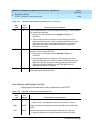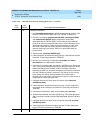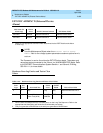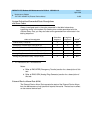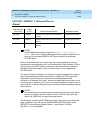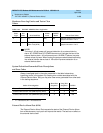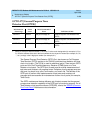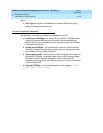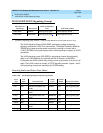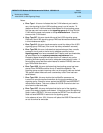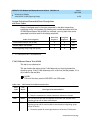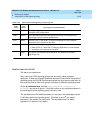
DEFINITY ECS Release 8.2 Maintenance for R8.2csi
555-233-119 Issue 1
April 2000
Maintenance Objects
3-668GPTD-PT [General Purpose Tone Detector Port (CPTR)]
3
GPTD-PT [General Purpose Tone
Detector Port (CPTR)]
The General Purpose Tone Detector (GPTD) Port, also known as Call Progress
Tone Receiver (CPTR), resides on the TN2182 combined tone detector and tone
clock circuit pack. (The TN744 is used for additional ports.) There are two GPTD
ports and four Dual Tone Multifrequency Receiver (DTMR) ports on a Tone
Detector circuit pack. The GPTD port is used to perform level measurements of
test tones and to detect call progress tones. Examples of call progress tones are
dial tone, ring back, busy, alert, confirmation, and recall dial. The abilities of the
GPTD port to perform level measurements of test tones and to detect call
progress tones are essential for maintenance of other circuit packs (for example,
Tone-Clock).
The GPTD maintenance feature defines a set of tests to ensure that the general
purpose tone detection capability of the GPTD port is functioning properly. For all
Tone Detector circuit pack level errors (DETR-BD), refer to the‘‘XXX-BD (Common
Port Circuit Pack)’’ Maintenance documentation.
MO Name (in
Alarm Log)
Alarm
Level
Initial Command to
Run
1
1. Where P is the port network number (1 for PPN); C is the carrier designation (for example, A, B, or
C); SS is the address of the slot in the carrier where the circuit pack is located (for example, 01, 02,
..., etc.); and pp is the 2-digit port number (for example, 01).
Full Name of MO
GPTD-PT MAJOR test port PCSSpp sh General Purpose Tone Detector Port
(CPTR)
GPTD-PT MINOR test port PCSSpp sh General Purpose Tone Detector Port
(CPTR)
GPTD-PT WARNING release port PCSSpp General Purpose Tone Detector Port
(CPTR)



